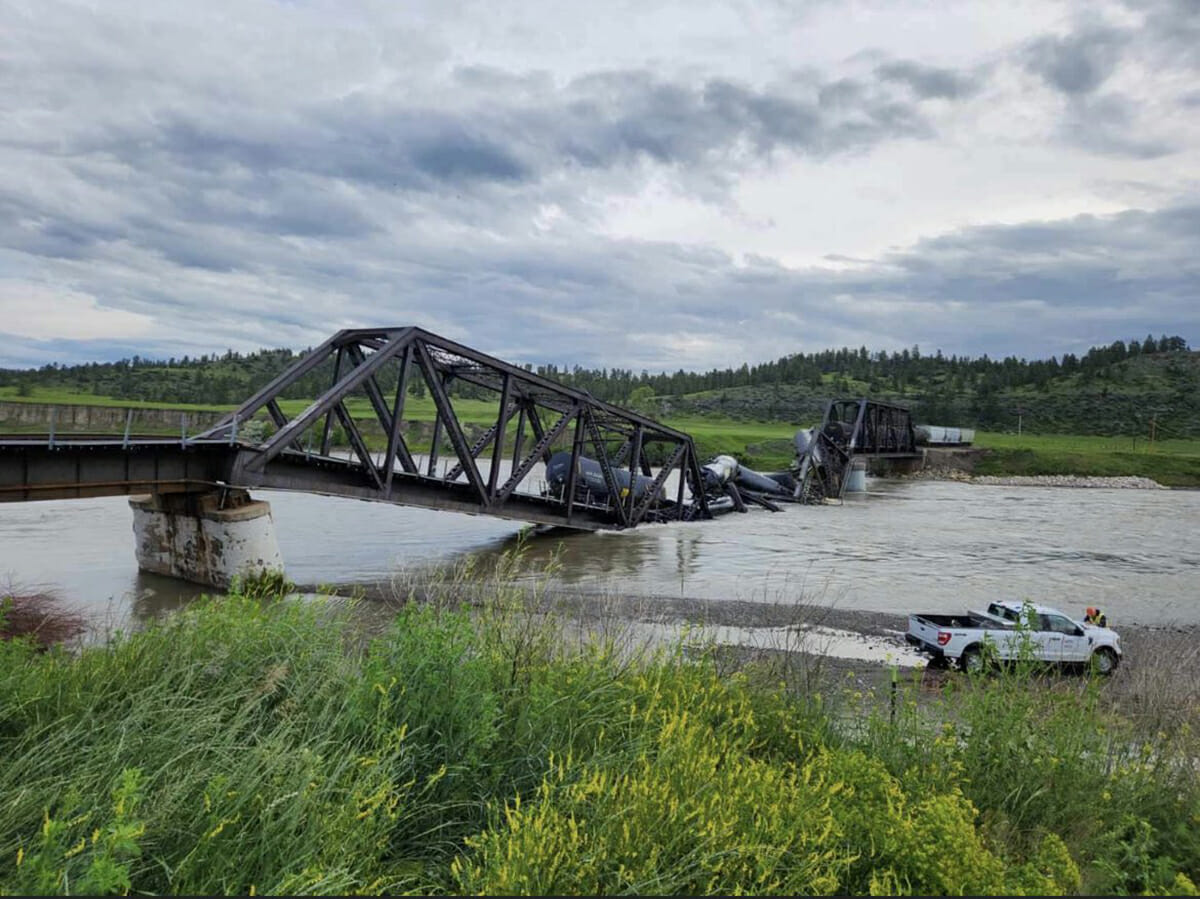In mid-June, just as high waters were still flushing the Yellowstone River, sixteen railcars derailed after a bridge collapsed. The train, carrying hazardous materials such as hot asphalt, molten sulfur, and scrap metals, is just one of several train derailments making the news this year. This time, in an iconic river with its fair share of recent challenges.
Montana Rail Link is responsible for cleanup costs from the Yellowstone incident. Of the sixteen derailed cars, ten of them submerged in the river about 40 miles west (and upstream) of Billings. The asphalt and sulfur spilled into the river, solidified, and moved downstream. No injuries were reported, and the environmental impact of the derailment is still unknown. But one thing is certain: aging infrastructure and lack of oversight is endangering the future of our freshwater resources.
Train derailment, bridge collapse, water pollution. Sound familiar? Because it is.
This is the second train derailment in Montana to make news in 2023. And who could forget the Yellowstone River floods in 2022? We watched the dramatic bridge collapse caught on camera near Yellowstone National Park. All three instances are flashing warning signs: we must invest in America’s aging infrastructure. And do it soon, before our coldwater rivers and rural communities suffer even more.
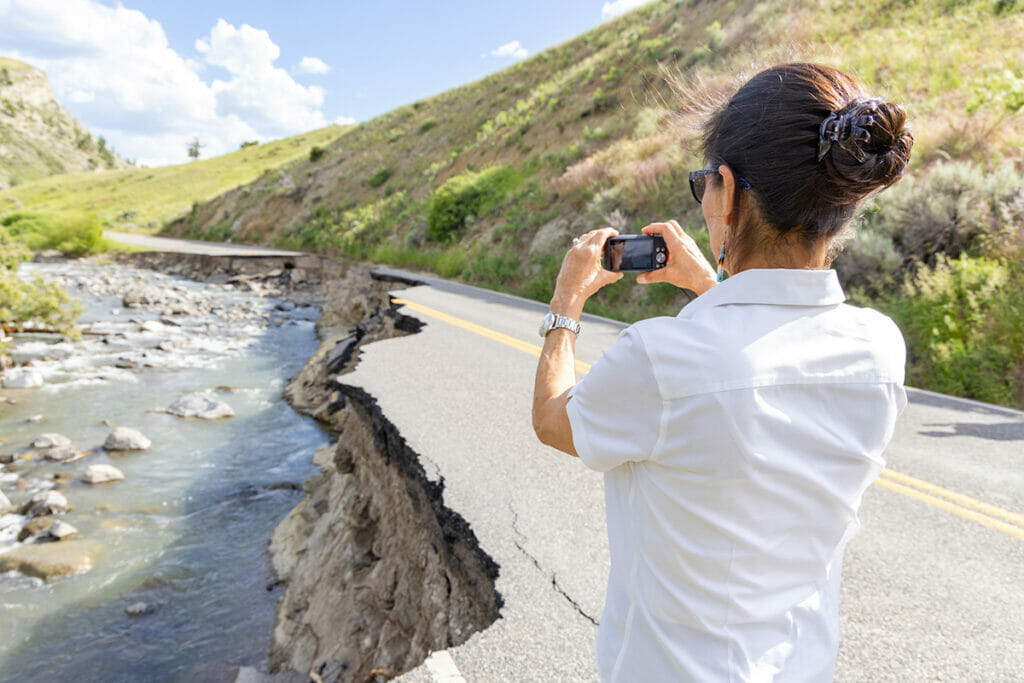
Trouble in Paradise: the “Beer Train” Derailment.
In April, a 25-car train derailed into a remote area of the Clark Fork River, near Paradise, Montana. The derailment, while serious, became the talk of the town due to the images of fisherman claiming bottles of beer from the derailed cars.
But it wasn’t just cases of Coors Light and Blue Moon that put water quality at risk in the famous trout river: powdered clay and a tanker car filled with butane threatened water quality due to the crash. To make matters worse, the train derailed in a narrow tunnel with little clearance, making extraction and cleanup difficult. The site was only accessible via the blocked railroad track or by taking a boat across the river.
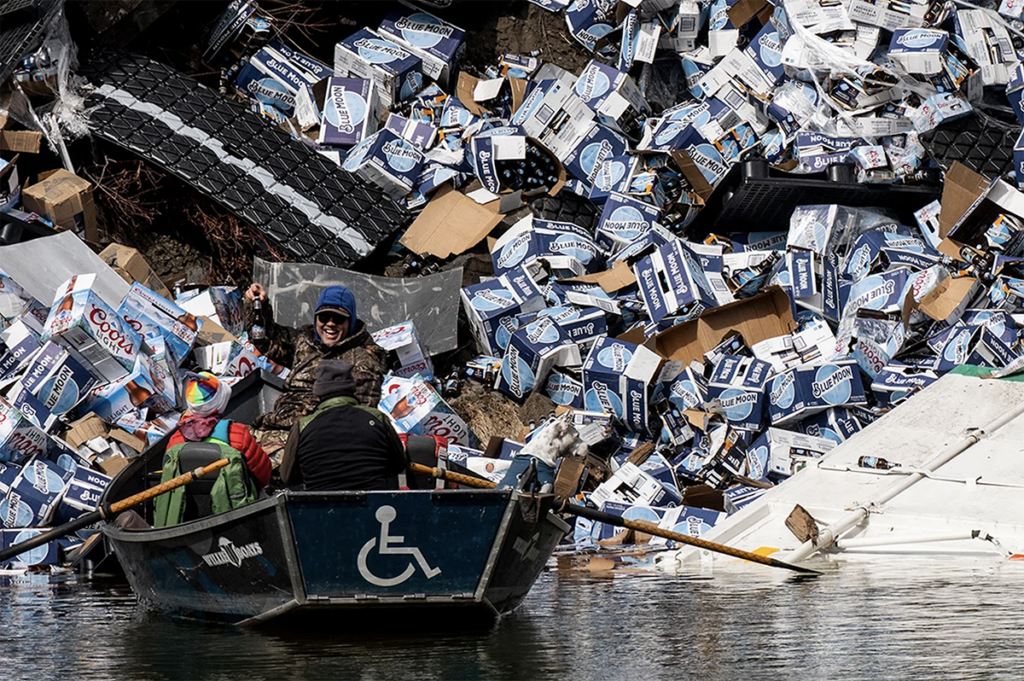
According to the Associated Press, freight railcar inspections happen less often and are not as thorough as in years past. LaVerne “Lucky” Sultz, TU member and part of the Oil Safe Flathead coalition, says that railways in Montana aren’t getting the maintenance they need. Lucky has worked for more than a decade on improving safety measures and rail industry transparency. He says trains are hauling more hazardous materials along rivers and wilderness areas – including large amounts of oil – and not making adequate preparations to protect waters from potential spills and derailments. The self-regulation of railroad standards, paired with aging infrastructure means incidents like the Paradise and Yellowstone River derailments are becoming more common – and there’s little being done to prevent similar incidents in the future.
Add in climate change? Rivers rise and the ground begins to crumble.
In June 2022, an atmospheric river event flooded the Yellowstone National Park region, sweeping away roads, houses, and bridges. The flooding event devastated local communities and closed major National Park locations due to severe damage to wastewater systems and power lines.
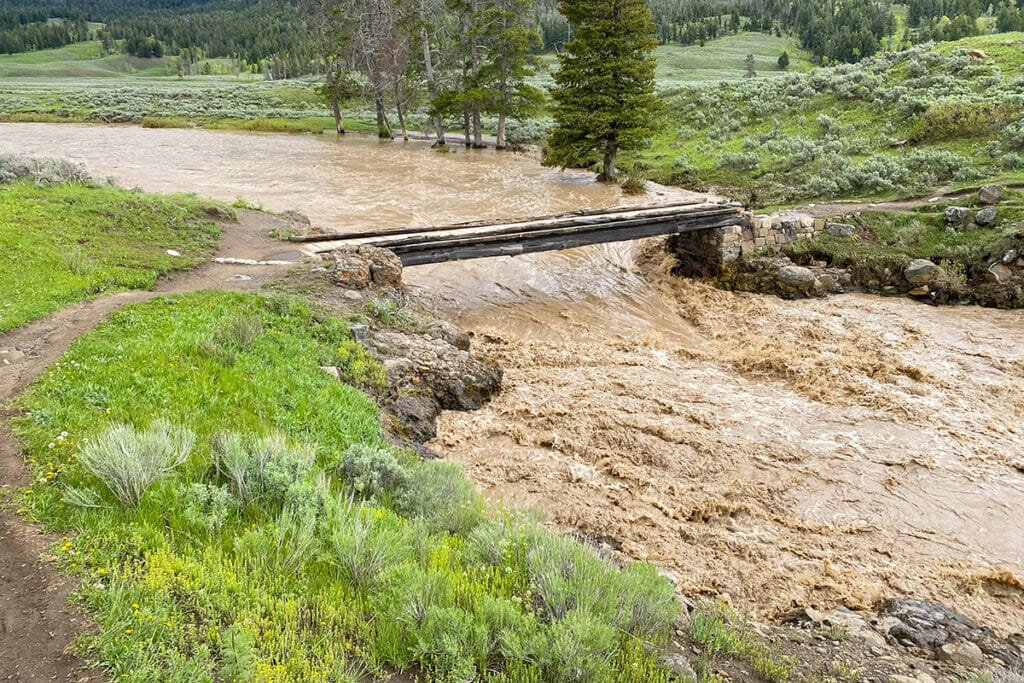
According to U.S. Geological Survey, the level of flooding in Southern Montana was unprecedented, likely worsened by a changing climate – it is being called a 500-year flood event. The regional tourism economy, and the local guides, outfitters and community members that rely on it, took a hit throughout 2022 as repairs began. As of June 2023 – a year later – Yellowstone National Park is still working to repair damage caused by the flooding event.
As natural disasters like flood, drought, and catastrophic wildfires become more common – the United States is forced to confront what we’ve known for a long time: we must invest in our aging infrastructure to ensure our communities are resilient in the face of climate change.
Additionally, rural roads, bridges and railways must be updated to ensure maximum safety standards. Trout Unlimited’s work to reconnect floodplains lessens the impact of flooding and stores water for late summer flows. That work, paired with climate-resilient roads and bridges, will prevent catastrophic incidents from happening.
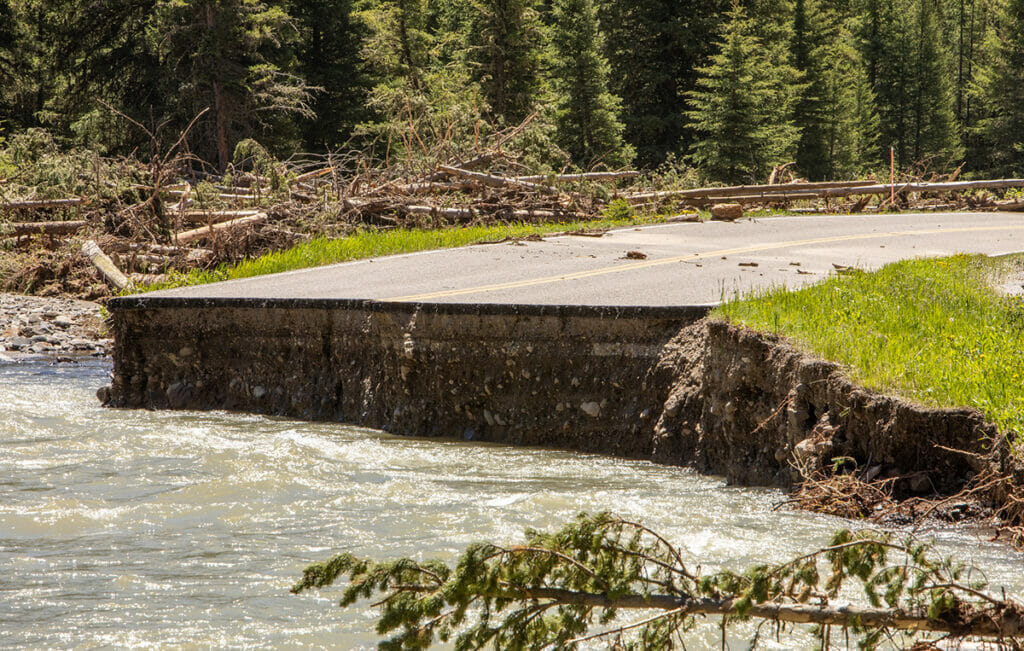
As infrastructure funding hits the ground thanks to the Bipartisan Infrastructure Law and Inflation Reduction Act, it’s essential that we invest in safe and climate-resilient infrastructure that can withstand the test of time and protect our precious freshwater resources from further harm.



